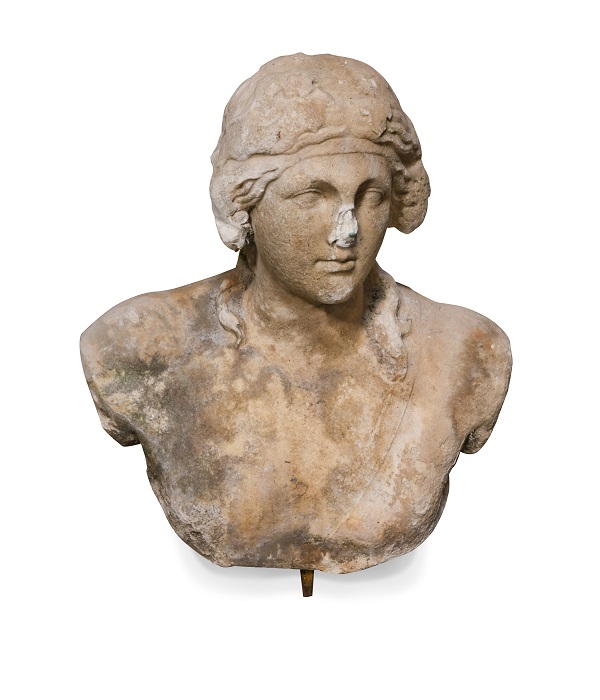Whether you live in a city flat or a country pile, or somewhere in between, no one can deny the focus the pandemic has put on our surroundings. Whether you have acres of parkland, a courtyard garden or a balcony, suddenly outside space, big or small, became one of the most important parts of lives during the miserable months of lockdown. This has, of course, brought with it a newfound love of gardening which has clearly ripped through the UK over the past 18 months, resulting in sell-out sales of garden furniture, barbecues and so on as people’s homes and gardens become the place for both work and play.
Here we look at garden statuary and its consistent charm for adding a new element to outside space. Whilst it has always been the mainstay of the upper echelons of garden design, it has become increasingly fashionable in recent years as people look to recreate the bucolic landscapes of some of the country’s finest country homes. Famously, the gardens at Chatsworth House are scattered with some of the finest versions of garden statuary, including both antique and contemporary examples from present day artists.
Antique garden statues, including busts, figures, fountains or animals have a certain arcadian magnetism which cannot otherwise be replicated. There is little more charming or iconic of the English country house than two recumbent lions on entry to a certain part of a garden, or a beautiful maiden’s head peeping through a curtain of flowers, or a statue of a nymph, perfectly placed against well-clipped box hedging. Using ornamental sculpture in gardens dates back to the Greek and Roman periods, where effigies of gods sculpted in marble and bronze were used to create gardens on a magnificent scale and this influence can still very much be seen today.
At the Fine Sale on the 30th June and 1st July, Cheffins is selling a handful of fantastic examples consigned from Julians Park, in Hertfordshire. Built in 1605, this magnificent country house was home to established socialite and art collector, Mrs Audrey Pleydell-Bouverie, who was Lady-in-Waiting to the Queen and counted the likes of Cecil Beaton, Coco Chanel, Salvador Dali and Fred and Adele Astaire in her social circle. Mrs Pleydell-Bouverie appointed the influential interior decorator and designer, Stéphane Boudin of French atelier Maison Jansen to assist in the decoration of Julians Park and went on to collect furniture and artwork from across the world in her redesign of the property. Julians Park was the pinnacle of taste in the 1930s and 1940s and was much celebrated for its cutting-edge interiors and garden design.
Direct from Julians Park comes a white marble bust of a young Emperor, which is from Italy and dates to the 18th century. This handsome figure in classical dress, was likely to have been brought back from the Grand Tour. It has an estimate of £500 - £1,000.

Marble bust of a young emperor
Similarly, there is white marble bust of the young Bacchus, God of agriculture, wine and fertility, again, 18th century from Italy, and direct from the gardens at Julians Park. This one also has an estimate of £500 - £1000.

Bust of the young Bacchus
The leading lot of the garden statuary section has to be the white marble bust of a maiden from 18th century Italy. Modelled in classical drapery, and standing at 77cm high, this one has an estimate of £1,000 - £1,500 and would look fabulous in any garden setting, city or country.

Marble bust of a maiden
When buying garden statuary, antique examples are always the most sought-after. As after hundreds of years of withstanding the weather, they come with the most fabulous patina which all adds to their charm. Auction houses are often a good bet for these, or there are specific antique garden statuary dealers across the UK. The highest value examples tend to be made from bronze or marble and can achieve well into the thousands. For example, in 2019, Cheffins sold a 19th century bronze goat by Lombardi, which made £8,000, and as a more contemporary example, a bronze nude figure of a woman by American artist Victor Issa, made £7,500 in 2020. However, anyone in the market for something a bit more affordable which could still look smart in a garden setting, should keep an eye out for the best in class of composite versions which can be picked up for a few hundred pounds. Obvious damage should be looked for and also when buying at auction, the weight of the item should be considered, in case there is a need to arrange professional transport.
To view the catalogue and to find out more about Julians Park, click here.